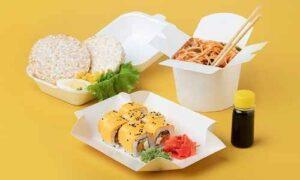
Three tips for creating a good menu
Three tips for creating a good menu
A good menu goes a long way. They help start conversations with your customer about who you are and what you’re selling. They’re like an advertisement, one that your customer will spend time looking through. With that in mind, here are three tips for creating a good menu.
1. Start with your USP
Why do customers love eating at your restaurant when they have so many other options?
They could be attracted to your restaurant because the service is excellent. Or maybe the pricing is low. Perhaps the theme of your restaurant is fun and interactive.
It all comes down to your Unique Selling Point (USP).
To come up with a good USP, research your target market. Consider demographic and behavioural data. Consider cultural factors: is your target audience conservative, or are they open to new food trends? Can they handle exotic, fiery spicy foods from Asia, or would such dishes have to be mellowed down to suit local tastes?
A successful restaurant knows what their customers want (they have a good USP), and their menu will portray this by showcasing dishes that sell!
2. Be particular about pricing
Pricing can make or break your business.
Without a doubt, high prices can scare off customers. At the same time, customers get suspicious about the quality of restaurants with low pricing. Not to mention you could lose out on potential profits if your dishes are undervalued.
You can justify higher prices if you’ve differentiated your restaurant somehow. However, if your competitors are selling the same dishes at cheaper prices, you would have to go the extra mile to keep customers returning to your restaurant.
Nevertheless, pricing a menu is not as complicated as it seems. It’s also a vital step when creating a good menu.
To price your menu effectively, you should be familiar with cost of sale, food cost percentages and contribution margins.
(Now brace yourself for some math…)
Cost of sale is the total cost of all the ingredients required to make a dish and it is expressed as a food cost percentage:
Food cost percentage = (costs ÷ sales) x 100.
So if a burger costs $10 to make, and it sells at $40: ($10 ÷ $40) x 100 = ($0.25) x 100 = 25%.
Now let’s say you want to sell your pizzas at $20 with a targeted food cost percentage of 35%, you would use a variation of the original formula to calculate the maximum cost of ingredients for making that pizza:
Cost of making pizza = sales x cost percentage. So $20 x 0.35 = $7.
Businesses rely on food cost percentages to cover costs and boost the financial health of their business.
The contribution margin is another metric to think about when pricing your menu. You calculate it by deducting the cost from sales (sales – cost). Basically, it’s the revenue left over to cover other expenses like rent and utilities and provide a profit.
For example, let’s say you’re selling a salad at $10 and it costs $4 to make: the contribution margin is $10 – $4 which is $6.
In brief, when it comes to pricing, the bottom line is this: you want lower food cost percentages and higher contribution margins.
Needless to say, the math is a little tedious, but we urge you to embrace it because it’s vital to the profitability of your menu items.
With that being said, if you want to dive deeper into the topic of menu pricing, check out this article on Restaurant Accounting 101: Contribution Margins.
3. Improve sales with a fitting design and layout
Here’s another great tip for creating a good menu: make sure it appeals to your target customer. Your font, the language you use in the menu, the layout of the menu, and its design; everything should positively affect your customers. Reading your menu should be a seamless experience.
As a general rule, avoid using dollar signs in your menu – they remind customers about the expense of their experience. Research also shows that it’s easier for eyes to focus on the right side of a menu; and that the first items on a menu are in prime positions.
So if certain menu items have low food cost percentages and high contribution margins – and they sell well – you may consider highlighting them on the right side of a menu. Maybe put a “customer favourite” stamp next to their images. Or “box” them to make them stand out.
Conclusion
To conclude, a good menu is vital to the success of your restaurant. Giving your menu the time and energy it deserves will turn it into an invaluable advertisement, inviting your customer to an experience they’ll happily come back to.
Shopping at Interwaters.com
Takeout and delivery options are vital revenue streams for many restaurants today.
Once you create a good menu for your business, you still have to put some thought into the packaging you’ll use to deliver or pack food for your customers.
What would best preserve your dishes as they’re being transported five kilometres to the home of a hungry and eager customer?
Get in touch now for a free consultation on the optimal packaging your business should use.








Excellent quality, аs desсribed , and ԛuickly delivered.
Ꮮοok at my web-site: macrame pot hanger
Thanks!!